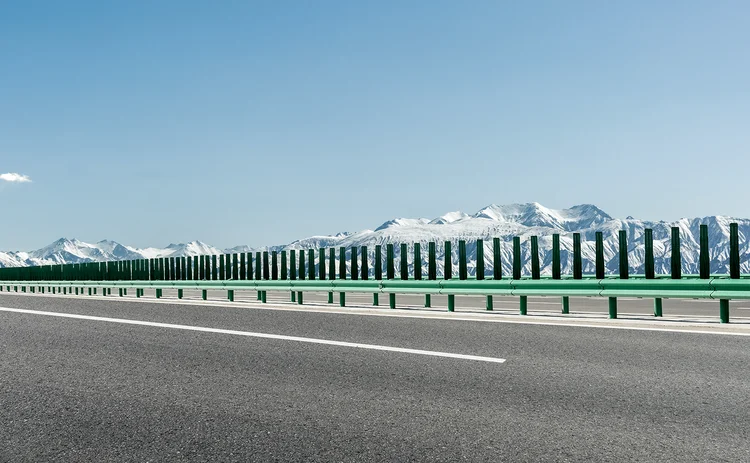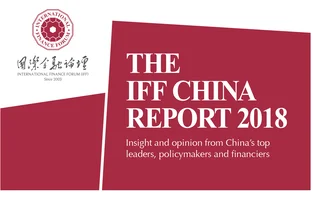
Upgrading globalisation
Gu Shengzu, vice-chairman of the IFF and vice-chairman of the National Committee of the Chinese People’s Political Consultative Conference, believes the Belt and Road Initiative will unlock connectivity and create a new, inclusive and transformational type of globalisation


In 2017, the Trump administration announced the US’s intention to withdraw from the Paris Climate Agreement, which – as the world’s second-greatest emitter of greenhouse gases – caused tremendous unease among the international community. UN secretary-general Antonio Guterres responded to the announcement by saying: “If the US withdraws from its global leadership role, other countries will surely replace it.” President Xi Jinping described economic globalisation as a “double-edged sword” – it has fuelled global economic growth, but has also created global economic conflicts, such as a lack of robust driving forces for global growth, inadequate global economic governance and uneven global development.
Protectionism a backward step
Currently, the richest 1% of the world’s population owns more wealth than the other 99%, with around 700 million people living in extreme poverty. Italy’s youth unemployment rate is almost 40%, and in some US states it exceeds 30%. In the face of the problems associated with globalisation, two options lie ahead: to resort to exclusionism, protectionism and deglobalisation; or to adjust and reform traditional globalisation, moving ahead with a new version of globalisation through transformation and upgrading. The first option – an example of which is the US’s protectionist move in April 2017 of launching an investigation into steel imports in the name of national security – can only lead to a lose-lose scenario.

President Xi’s response to this was blunt: “Pursuing protectionism is like locking oneself in a dark room – while wind and rain may be kept outside, the dark room will also block light and air.” Is the Belt and Road Initiative (BRI) a retrospective or a rejuvenating move? Is it about building up China’s own back garden or a shared garden for all countries? Is it a Chinese Dream or a world dream? There are clear connections between the BRI and the Silk Route, especially in the ‘Silk Road spirit’. The BRI also transcends the Silk Route in terms of geographic reach – as there will be more participating countries – and quality. President Xi intends for the BRI to improve the ‘five connectivities’, namely the connectivities of policy, infrastructure, trade, finance and people. At the Belt and Road Forum for International Cooperation in May 2017, he proposed building five ‘roads’ – to peace, prosperity, openness, civilisation and innovation. Clearly, the BRI is not a solo performance by China, but a ‘chorus’ by all of the countries along the Silk Road Economic Belt.
The Belt and Road Forum has accelerated the transformation of the BRI from a Chinese initiative to a global consensus – from a concept to an action. The forum also announced that the BRI will have a goal of inclusive global development.
BRI survey results
The author conducted a survey in nine countries along the Silk Road Economic Belt on how the BRI is positioned in the process of the new type of globalisation, which concluded the following:
- The combination of chance and risk – there are huge potential risks in building the BRI, so it’s critical to seize the opportunities while accurately assessing the risks.
- The co-existence of interests and obligations – the BRI is not only shaping a community of shared interests, but a community of shared responsibilities.
- The equal role of the government and the market – the government is responsible for top-level design and, as major players in the market, enterprises are equally important.
- The interdependence of economy and culture – these serve as two wheels on the BRI’s drive towards globalisation.
“Pursuing protectionism is like locking oneself in a dark room – while wind and rain may be kept outside, the dark room will also block light and air”
President of China, Xi Jinping
President Xi has said that the Silk Route was a promised land of milk and honey. Today, the countries along the Silk Road Economic Belt are often associated with conflict, turbulence and challenges. There is still a long and difficult journey before the BRI can be built as a road to peace. The construction of the BRI requires joint participation of governments, enterprises, financial institutions, think tanks and media, and calls for co-ordinated action from government officials, enterprise leaders, financial managers, academic experts and media workers. Regarding top-level design, there are four requirements: to be ‘new’, by employing reform and innovation; connectivity, which is the most frequently used word in the BRI; to be ‘together’, by engaging in win-win co-operation; and the improvement of governance on a global level. In terms of systematic architecture, we need one ‘top’, a top-level design that aims for win-win co-operation; two ‘wheels’, economic co-operation, and sustainable development and people-to-people exchanges; six ‘pillars’: infrastructure, trade, industrial investment, finance, energy and technological innovation; and one ‘base’, optimisation of the global governance system. To achieve this, the author proposes the following:
- Promoting strategic connections with countries along the Silk Road Economic Belt. This would reinforce the strategic consensus and improve bilateral and multilateral communication mechanisms. China will build a shared community – a community with a shared vision for the future of mankind – and achieve inclusive globalisation through win-win co-operation. It will be key how the BRI links together the strategies of the countries along the Silk Road Economic Belt and other international agreements, such as the UN’s 2030 Sustainable Development Goals agreement and the Paris Climate Agreement.
- Boosting infrastructure connectivity. This refers not only to the connectivity of construction sites, but also of policies, rules and standards as we seek to propel free circulation of factors and optimise configuration. There is an old Chinese saying about alleviating poverty that explains the importance of free circulation of factors: ‘If you want to acquire wealth, fix the road first.’
- Establishing a balanced and equal trade and investment system. The trade volume among countries along the Silk Road Economic Belt accounts for a large proportion of the global total. China has promised to import commodities worth US$2 trillion and set up a series of co-operation areas, which will be essential to industrial collaboration and must be guided by private enterprise.
- Constructing a multi-tier financial system. This will enhance global financial stability by encouraging development, commercial and inclusive finance, and promoting the connections of various financial services. The Asian Infrastructure Investment Bank and Silk Road Fund boast excellent institutional designs and can unlock financial connectivity.
- Strengthening international energy co-operation. China will adapt its one-way model of oil and pipeline building into a multidimensional one.
- Advancing scientific co-operation among talented individuals. At the Belt and Road Forum, President Xi said that the BRI should be a road of innovation, inspiring deeper scientific and technological co-operation. China has signed agreements on intergovernmental scientific and technological collaboration with 49 countries along the Silk Road Economic Belt, and many countries are calling for the enhancement of co-operation on the part of high-tech parks in the BRI.
- Making people-to-people connectivity and cultural integration the top priority. Cultural soft power should be built through external discourse that gains value consensus and mutual strategic trust through people-to-people connectivity. Serving as the bedrock of the others, it is the most important of the five connectivities.
China will reform the international governance system and make more contributions to the public good. For example, governance philosophy and rules that aim to raise the influence of developing countries in global governance and promote a more just and reasonable international order. The theme of the 2016 G20 Hangzhou summit was innovation, openness, development and greenness, which match the development concepts laid out in China’s 13th Five-Year Plan: innovation, co-ordination, greenness, and open and shared benefits. It is fair to say that the G20 summit had a distinctly Chinese flavour. The BRI is a new platform for international co-operation, an upgraded version of China’s reform and ‘opening‑up’, a leader in new and inclusive globalisation and a new engine to drive inclusive global development.
Only users who have a paid subscription or are part of a corporate subscription are able to print or copy content.
To access these options, along with all other subscription benefits, please contact info@centralbanking.com or view our subscription options here: subscriptions.centralbanking.com/subscribe
You are currently unable to print this content. Please contact info@centralbanking.com to find out more.
You are currently unable to copy this content. Please contact info@centralbanking.com to find out more.
Copyright Infopro Digital Limited. All rights reserved.
As outlined in our terms and conditions, https://www.infopro-digital.com/terms-and-conditions/subscriptions/ (point 2.4), printing is limited to a single copy.
If you would like to purchase additional rights please email info@centralbanking.com test test test
Copyright Infopro Digital Limited. All rights reserved.
You may share this content using our article tools. As outlined in our terms and conditions, https://www.infopro-digital.com/terms-and-conditions/subscriptions/ (clause 2.4), an Authorised User may only make one copy of the materials for their own personal use. You must also comply with the restrictions in clause 2.5.
If you would like to purchase additional rights please email info@centralbanking.com test test test







